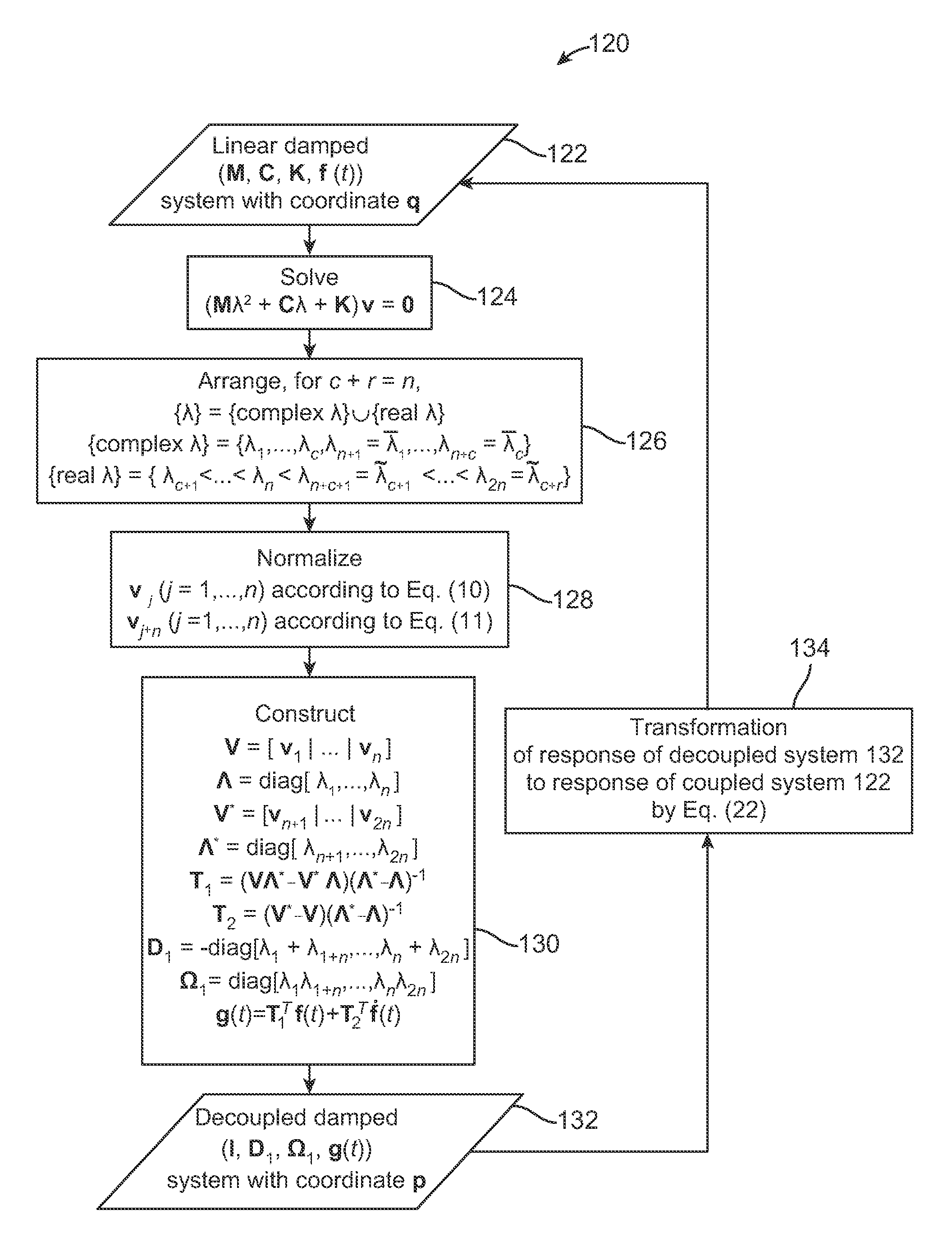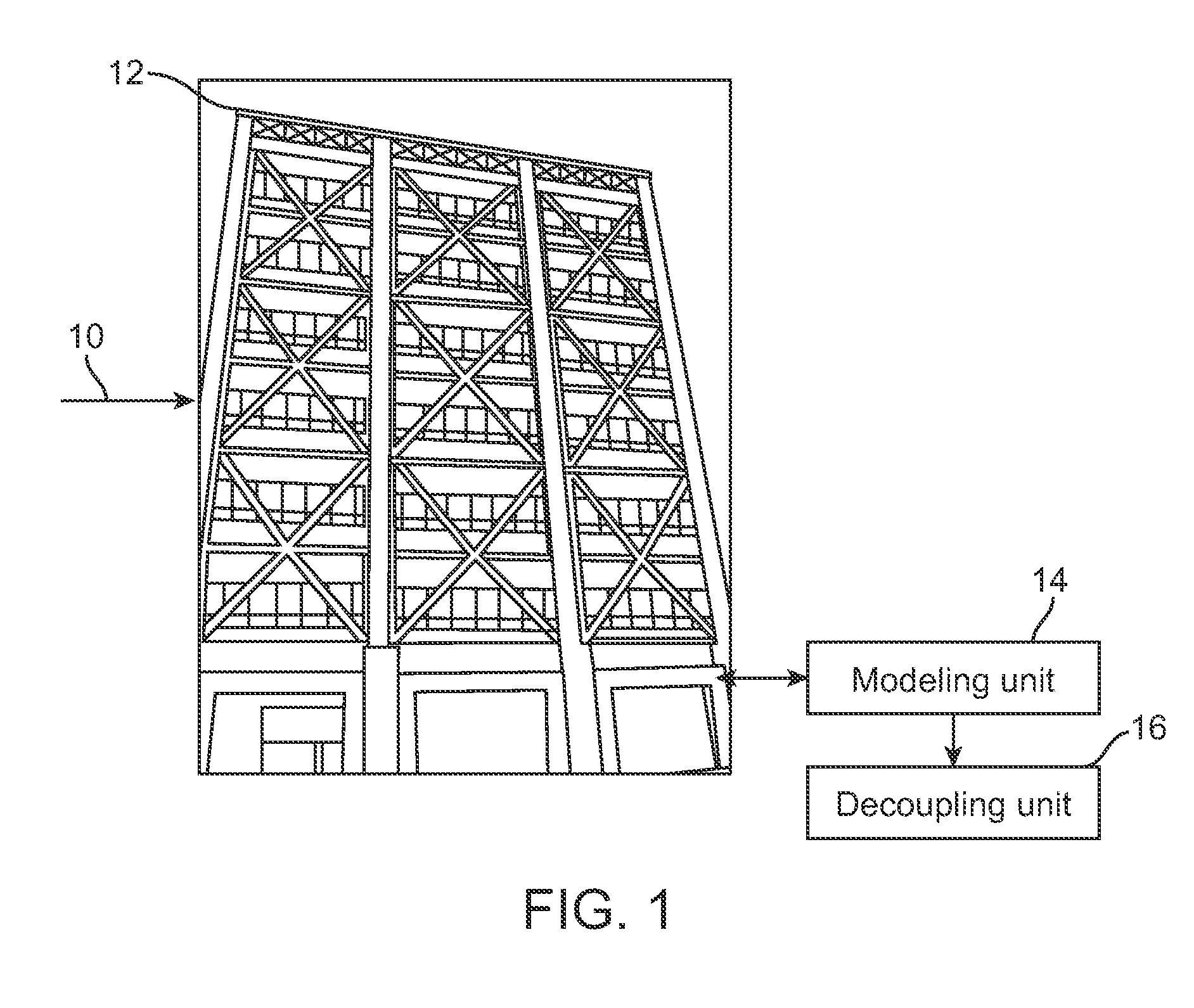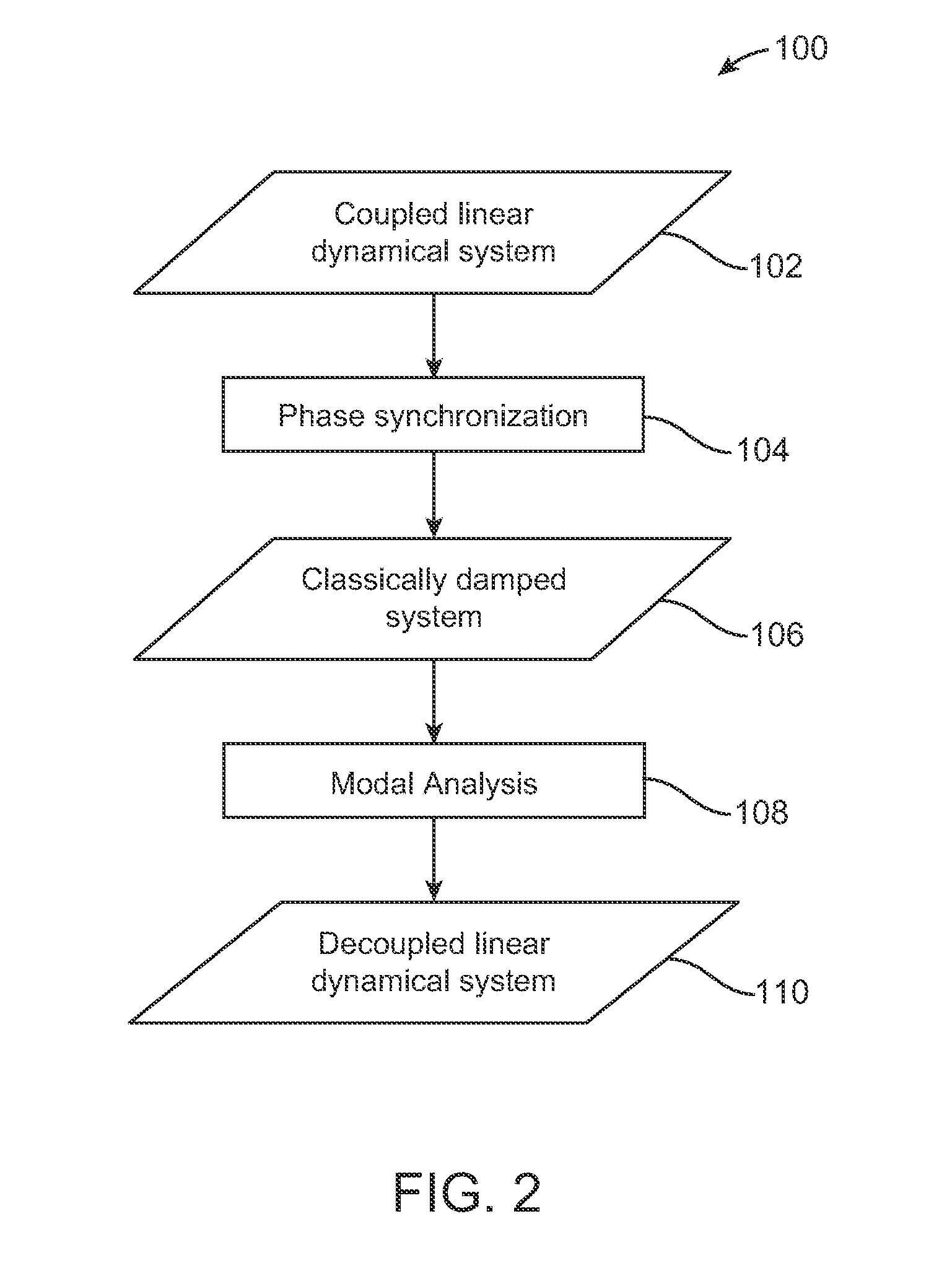Decoupling of linear dynamical systems
a dynamical system and linear technology, applied in the field of linear dynamical systems, can solve the problems of system dampedness, coupling is a major barrier to analysis and design, and the general procedure for decoupling linear dynamical systems has not been reported
- Summary
- Abstract
- Description
- Claims
- Application Information
AI Technical Summary
Problems solved by technology
Method used
Image
Examples
Embodiment Construction
Appendix B
DETAILED DESCRIPTION OF THE PREFERRED EMBODIMENTS
[0023]In various embodiments of the present invention, a method and apparatus is disclosed for decoupling linear dynamical systems. A linear dynamical system, as a certain class of mathematical models of various physical structures, is represented by a set of linear second-order ordinary differential equations with constant coefficients. In exemplary embodiments, a linear dynamical system models and predicts the dynamic behavior of machinery, structures such as buildings or bridges, transportation vehicles, such as ships, cars, airplanes and satellites, as well as electrical circuits.
[0024]In general, a linear dynamical system comprises any device or structure with inertial and linearly elastic properties and whose energy dissipation properties can be modeled as forces proportional to the velocities. A mathematical model of idealized electric circuits with inductors, resistors and capacitors also leads to a set of linear sec...
PUM
 Login to View More
Login to View More Abstract
Description
Claims
Application Information
 Login to View More
Login to View More - R&D
- Intellectual Property
- Life Sciences
- Materials
- Tech Scout
- Unparalleled Data Quality
- Higher Quality Content
- 60% Fewer Hallucinations
Browse by: Latest US Patents, China's latest patents, Technical Efficacy Thesaurus, Application Domain, Technology Topic, Popular Technical Reports.
© 2025 PatSnap. All rights reserved.Legal|Privacy policy|Modern Slavery Act Transparency Statement|Sitemap|About US| Contact US: help@patsnap.com



